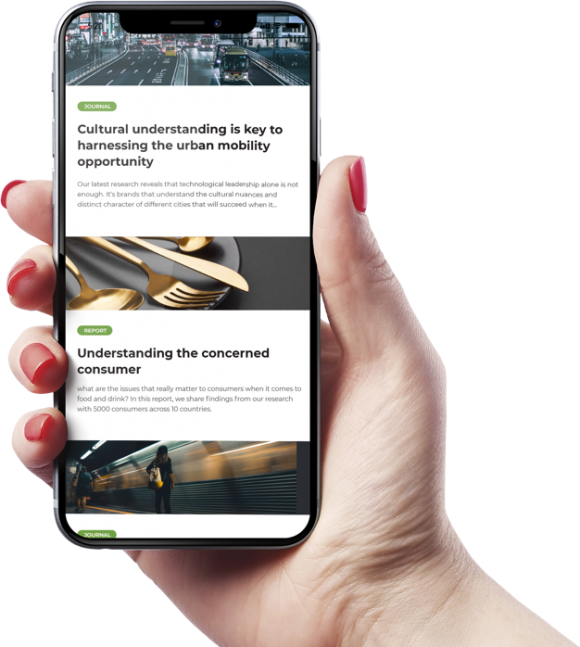Over the past decade, unboxing has evolved from a quirky online trend into a vital marketing touchpoint. What was once simply about revealing a product is now a carefully crafted experience that can make or break a brand’s first impression. Once seen purely as functional, packaging has become an essential part of the consumer journey—one that taps into emotional triggers, reinforces brand identity, and signals the product’s value long before it’s even used.
On social media platforms, where unboxing videos garner millions of views, brands have begun to recognise packaging as a vital tool for consumer engagement. The unboxing moment is now a shared experience that influences consumer behaviour and sets expectations. A carefully designed package can trigger feelings of anticipation, excitement, and loyalty—making it a powerful asset for any brand looking to connect with its audience.
The Emotional Impact of Packaging
Packaging plays a pivotal role in shaping the customer’s emotional journey, influencing how they perceive a brand and whether they become loyal advocates. From the moment a package arrives at the customer’s door, key psychological drivers—anticipation, curiosity, and satisfaction—are triggered, and each one contributes to the overall customer experience.
Anticipation starts when the customer knows their package is on the way. Whether it’s through tracking updates or the first sight of the branded box, expectations are being built. The design and quality of the packaging often set the tone for what the customer will think of the product itself. For example, BarkBox, a subscription service for pet products, has mastered this emotional build-up. Their brightly decorated boxes excite the pet owners and become part of the fun experience for their dogs, making unboxing a shared event.
Next comes curiosity, the moment when the customer holds the package and examines the design, textures, and features. Unique packaging elements like hidden compartments or playful messages heighten this sense of discovery. Internationally, brands like Lush—which focuses on natural beauty products—leverage packaging to create intrigue. Lush’s minimal yet distinct eco-friendly packaging sparks curiosity about the product’s natural ingredients and ethical sourcing, further reinforcing the brand’s values while enhancing the unboxing experience.
Finally, there’s satisfaction, the emotional reward customers feel when they open the box and find the product displayed thoughtfully. Small touches like personalised notes, complementary items, or even reusable packaging materials elevate this moment. Samsung, for example, has enhanced customer satisfaction through its eco-conscious packaging for smartphones, aligning the unboxing experience with its sustainability goals. Consumers not only appreciate the product itself but also feel good about the brand’s environmental impact.
By strategically tapping into these emotional triggers, brands can create memorable unboxing experiences that extend beyond the product itself, strengthening their relationships with customers and turning packaging into a valuable brand asset.
Packaging as a Brand Ambassador
Packaging does more than protect a product—it acts as a direct extension of a brand’s identity. In many ways, it is the first ambassador that represents the brand to the consumer. Consistent design elements such as colour schemes, fonts, and textures are essential in communicating a brand’s values and ensuring a cohesive brand image. These details build familiarity and trust over time, ensuring that consumers can recognise the brand at a glance, no matter where they encounter it.
Design and Consistency
Maintaining design consistency across packaging is critical to reinforcing brand identity. Elements like colours, typography, and even textures can evoke certain emotions and tell a brand’s story without words.
Take Coca-Cola, for example, whose iconic red packaging and distinct font have been consistent for decades, creating instant recognition globally. Conversely, a brand like BarkBox uses playful illustrations and bright colours, reinforcing the fun and joy associated with its product.
Texture is another powerful design element. Luxury brands like Hermès use high-quality, textured materials to signify prestige and exclusivity.
These tactile details and consistent branding convey luxury and justify higher price points. In contrast, minimalist brands like Muji use clean lines, simple colours, and eco-friendly materials to communicate simplicity, functionality, and sustainability—values central to their brand.
Sustainability as a Differentiator
Consumers are increasingly choosing brands that align with their values, particularly regarding environmental responsibility. Brands that adopt eco-friendly packaging appeal to this growing demographic and strengthen their credibility.
For instance, Patagonia is well known for its commitment to sustainability, including using recycled materials for packaging. The brand’s minimal, eco-conscious packaging reflects its core values and has become a selling point for consumers who prioritise environmentally friendly products. This focus on sustainability has strengthened Patagonia’s relationship with its target audience, many who are eco-conscious adventurers.
Minimalist vs. Elaborate Designs
When it comes to packaging design, brands face a strategic choice: adopt a minimalist approach or opt for elaborate, luxurious packaging. Each strategy has its implications for consumer loyalty and brand perception.
Image credit: Apple
Minimalist packaging, like that of Muji or Apple, focuses on simplicity and clean design and often aligns with sustainability. This appeals to consumers who value function, practicality, and eco-friendliness. These brands often leverage social media engagement by highlighting the simplicity and eco-friendly aspects of their packaging.
On the other hand, elaborate packaging, such as that used by luxury brands like Chanel or Louis Vuitton, emphasises exclusivity and craftsmanship. These brands invest heavily in rich materials, intricate designs, and unboxing experiences that reflect their premium positioning.
Consumers who engage with these brands are often more brand-loyal due to the luxurious experience these packaging designs provide, even though sustainability may not always be at the forefront.
Labelling: More Than Just Information
While packaging often takes centre stage in the unboxing experience, labelling is a powerful tool that carries regulatory and brand messaging. Labels are required to meet specific legal standards, such as listing ingredients, product safety warnings, and certifications. Still, they also offer brands a unique opportunity to tell their story, highlight sustainability efforts, and engage customers on a deeper level.
Regulatory vs. Brand Messaging
Balancing regulatory requirements with brand messaging is a delicate but necessary task. On the one hand, labels must comply with industry standards, whether listing nutritional information for food products or safety guidelines for electronics. On the other hand, labelling is an extension of a brand’s identity. A well-designed label can convey a brand’s commitment to quality, transparency, and even sustainability.
For example, Whole Foods Market often highlights sourcing information on their product labels, emphasising organic or locally sourced ingredients to align with their brand values. Similarly, certifications like Fair Trade, USDA Organic, or B Corporation can be prominently displayed on labels, reinforcing a brand’s commitment to ethical practices.
This strategic labelling ensures compliance and helps build consumer trust by showcasing values that resonate with the target audience.
Interactive Packaging
As technology evolves, brands are discovering new ways to enhance the unboxing experience through interactive packaging. QR codes, augmented reality (AR), and digital integrations are becoming increasingly common, transforming labels from static sources of information into dynamic communication tools.
For instance, L’Oréal uses QR codes on its skincare packaging, allowing consumers to scan and access detailed product information, how-to videos, and even personalized skincare recommendations. By integrating digital experiences into the packaging, brands can add value beyond the product, offering interactive and informative content that deepens customer engagement.
Augmented reality takes this interaction a step further. Cadbury leveraged AR in a promotional campaign where consumers could scan their chocolate bars to unlock virtual games and experiences. This elevated the unboxing moment and encouraged brand interaction long after the product was consumed.
Smart Packaging Technologies
The rise of smart packaging is another trend for revolutionizing labelling and packaging. Technologies like smart sensors, which can monitor freshness in food packaging, or NFC tags, which enable mobile payments or product authentication, are changing how brands communicate with consumers. These innovations provide added convenience and offer insights into product quality, sustainability, and usage.
Brands in healthcare, food, and fashion are leading the charge in adopting these technologies. For example, Nike uses RFID tags to enhance the in-store experience, allowing consumers to scan their shoes and access information about stock availability and product specifications. Similarly, Tetra Pak has developed smart packaging that tracks the supply chain and provides real-time updates on product conditions, ensuring freshness from production to consumption.
Image credit: Nike
Table: Innovative Packaging Technologies
| Technology | Description | Industry | Brand Example |
| QR Codes | Scannable codes that provide additional product info | Cosmetics, Food | L’Oréal, Whole Foods Market |
| Augmented Reality | Integrates digital experiences through mobile devices | Food, Entertainment | Cadbury, Coca-Cola |
| Smart Sensors | Monitor product quality, freshness, or temperature | Food, Healthcare | Tetra Pak, Nestlé |
| RFID/NFC Tags | Enables mobile payments or product authentication | Fashion, Retail | Nike, Zara |
As consumers become more digitally savvy, the demand for interactive and smart packaging technologies will only grow. Brands that adopt these innovations improve the customer experience and stay ahead in a competitive marketplace where packaging and labelling can make all the difference.
Packaging’s Role in Customer Retention and Referral
In today’s social media-driven world, packaging has evolved beyond a protective or branding tool—it’s now a key element in driving organic marketing and customer retention. Brands are increasingly designing their packaging with the intent to create “share-worthy” moments, leveraging the power of platforms like Instagram and TikTok to reach a wider audience through user-generated content.
Creating Share-Worthy Moments:
The concept of creating an “Instagrammable” moment has become a powerful strategy for brands. Consumers are more likely to share products that arrive in aesthetically pleasing, unique packaging that enhances the overall experience. Packaging that includes bold colours, personalised messages, or unexpected design elements can inspire customers to share their unboxing experiences online, providing free marketing and expanding the brand’s reach.
Subscription box brands like FabFitFun have mastered this approach. Their seasonal boxes are designed with vibrant patterns and eye-catching themes, making them irresistible to share on social media. As a result, their unboxing videos and posts consistently generate thousands of likes and shares, helping to build brand visibility and attract new customers through word-of-mouth recommendations.
Image credit: FabFitFun
The Ripple Effect
A positive unboxing experience doesn’t end with the product reveal; it has a lasting impact that extends to brand advocacy, higher customer retention, and even influencer collaborations. When customers feel delighted and valued through a thoughtfully designed unboxing moment, they are more likely to remain loyal to the brand, repurchase products, and recommend the brand to others.
Brands like Glossier have taken full advantage of this ripple effect. Glossier’s packaging is designed with simplicity and charm, featuring custom pink bubble wrap pouches and stickers that make customers feel like part of an exclusive community. The unboxing experience, paired with the product, often leads to glowing reviews and repeat purchases, strengthening the brand’s relationship with its customers. Moreover, influencers are naturally drawn to products that offer both high-quality goods and a shareable unboxing experience, leading to organic collaborations and greater exposure.
Case Study: Measurable Success Through Enhanced Packaging
A notable example of packaging’s influence on brand success is HelloFresh, a meal kit delivery service that revamped its packaging to improve the unboxing experience.
Previously, their packaging was utilitarian and did not leave a lasting impression on customers. After conducting customer feedback surveys, the brand introduced more colorful, branded packaging that included meal instructions printed directly on the box, making it more engaging and functional.
The impact was immediate. HelloFresh reported a 20% increase in social media shares within the first quarter of the packaging redesign and saw a 15% boost in sales over the following six months. This success was driven by the shareable nature of the packaging, which encouraged customers to post their unboxing experiences and spread the word about the brand’s service.
| Metric | Before Packaging Redesign | After Packaging Redesign | Percentage Change |
| Social Media Shares (per quarter) | 50,000 | 60,000 | +20% |
| Sales (over six months) | $10 million | $11.5 million | +15% |
| Customer Retention Rate | 72% | 80% | +8% |
| Unboxing Satisfaction (Survey) | 65% | 85% | +20% |
By focusing on packaging as a critical component of the customer experience, brands like HelloFresh have proven that a well-executed unboxing moment can lead to tangible, measurable business outcomes. Whether through social media buzz, increased sales, or stronger customer retention, packaging is increasingly significant in driving brand success.
The Data-Driven Approach to Packaging Decisions
Packaging decisions should be informed by data, not intuition. Brands that use consumer insights to guide packaging design choices can better align with customer expectations, improve user experience, and drive stronger engagement. From initial concept to production, market research is vital in optimising packaging for form and function.
Consumer Insights
Market research methods such as focus groups, A/B testing, and surveys provide valuable insights into consumer preferences around packaging.
For example, focus groups can reveal how different textures, colours, or unboxing mechanics influence customer satisfaction, while A/B testing allows brands to trial variations of packaging designs with different segments. A/B testing is instrumental in e-commerce, where brands can test packaging features such as ease of opening, durability during shipping, or even aesthetic appeal on social media. This data-driven approach helps brands create packaging that resonates with their target audience and enhances the overall customer experience.
Consider Dollar Shave Club’s success. The company used feedback from focus groups and A/B testing to refine its minimalist packaging. They discovered that customers valued ease of opening and appreciated sustainable materials, which led the brand to optimise its packaging in a way that boosted customer satisfaction and brand loyalty.
Metrics to Track
Measuring the effectiveness of packaging decisions goes beyond aesthetics; it involves tracking tangible metrics that reflect the customer experience and brand performance. Some of the most important metrics include:
- Unboxing Satisfaction Rates: Surveys can gauge customer satisfaction with the unboxing experience, which directly affects brand perception.
- Return Rates Due to Packaging Issues: Tracking returns due to damaged or inadequate packaging helps identify weaknesses in packaging design or durability.
- Social Media Engagement: Brands can monitor social media platforms to see how often customers share unboxing experiences, which drives organic promotion and provides insights into what’s working in the packaging.
- Repeat Purchases: Packaging that enhances the unboxing experience can improve customer retention and increase repeat purchases. Brands like Glossier have demonstrated that well-designed, shareable packaging increases customer satisfaction and loyalty.
Trends in Unboxing Content
The unboxing phenomenon continues growing, particularly across social media platforms like Instagram, TikTok, and YouTube, where influencers and everyday consumers showcase their unboxing experiences.
According to recent reports, unboxing videos generate billions of views annually, with brands seeing measurable benefits from the increased exposure. This rise in user-generated content has pushed brands to invest in packaging that’s functional, aesthetically appealing, and “camera-ready.”
Influencers have become key players in promoting unboxing experiences. Brands that create visually engaging packaging—complete with personalised touches or unique design elements—are likelier to see their products featured in unboxing videos, further amplifying their reach. For example, Beauty Bay revamped its packaging to create a more luxurious unboxing experience, resulting in increased influencer collaborations and a significant uptick in social media engagement.
Table: Packaging Investment and Impact on Consumer Engagement Metrics
| Year | Average Packaging Investment | Return Rates | Repeat Purchases | Social Media Shares |
| 2015 | $1 million | 12% | 65% | 50,000 |
| 2018 | $1.5 million | 9% | 70% | 120,000 |
| 2023 | $2.2 million | 7% | 78% | 250,000 |
As the data shows, brands that invest more in thoughtful packaging design see tangible results in critical areas, such as reduced return rates, higher repeat purchase rates, and greater social media engagement. By leveraging consumer insights and tracking these metrics, brands can continuously refine their packaging strategies, making smarter decisions that lead to long-term growth.
Final Thoughts: Elevating Packaging Beyond Product Protection
Packaging is no longer just a vessel for protecting products—it’s a critical brand asset that plays a pivotal role in shaping the customer journey. Packaging influences brand perception, customer satisfaction, and loyalty from the moment a package is received to the unboxing experience and beyond. Brands that view packaging as an afterthought risk missing a pivotal opportunity to differentiate themselves in a crowded market.
Instead, packaging should be seen as a strategic tool that enhances the customer’s experience, reinforces brand identity, and drives repeat purchases.
Practical Takeaways for Improving Packaging
- Prioritise Sustainability:
- Use eco-friendly materials such as recycled or biodegradable packaging.
- Highlight sustainability efforts through labelling and certifications.
- Reduce excess packaging to minimise environmental impact.
- Maintain Branding Consistency:
- Ensure that the packaging design aligns with your brand’s visual identity (colours, fonts, logos).
- Create a cohesive experience across all touchpoints, from online presence to physical packaging.
- Consider brand values in packaging design choices—minimalist, luxurious, or practical.
- Focus on Sensory Appeal:
- Use textures, materials, and finishes that appeal to the senses, such as matte or glossy surfaces, embossing, or unique shapes.
- Incorporate tactile elements that make unboxing feel like an experience rather than just opening a box.
- Include thoughtful extras like personalised notes or product samples to add value and delight the customer.
- Leverage Interactive Elements:
- Integrate QR codes, AR features, or NFC tags to provide additional product information or exclusive content.
- Use digital tools to create an ongoing relationship with the customer, offering post-purchase engagement.
- Design for Shareability:
- Create packaging that looks great in photos or videos, encouraging customers to share their unboxing experience on social media.
- Incorporate design elements that make your packaging memorable and distinctive, setting you apart from competitors.
By treating packaging as a vital part of the brand experience, companies can forge stronger connections with their customers, increase brand loyalty, and ultimately drive long-term success. It’s not just about protecting the product—it’s about making a lasting impression.




